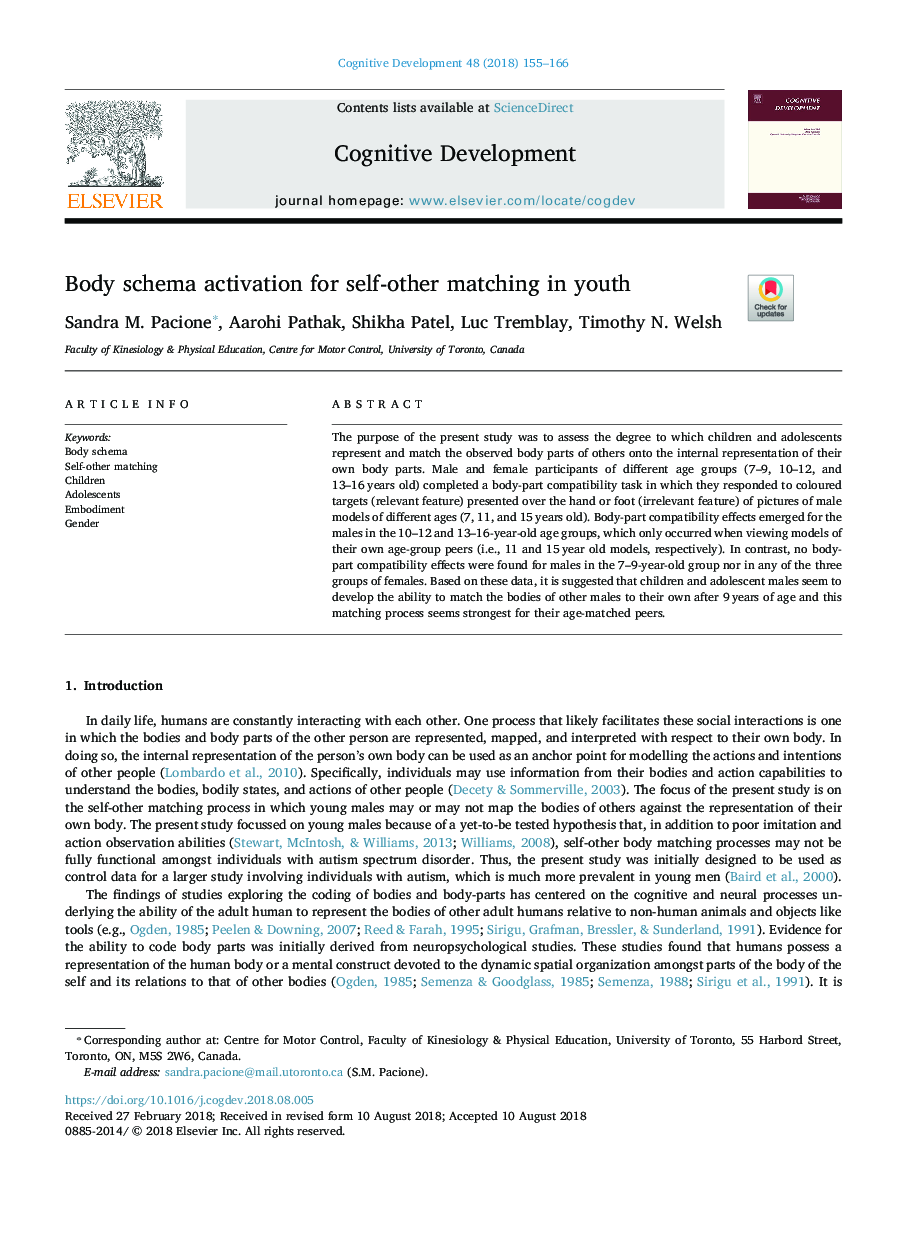| Article ID | Journal | Published Year | Pages | File Type |
|---|---|---|---|---|
| 11004496 | Cognitive Development | 2018 | 12 Pages |
Abstract
The purpose of the present study was to assess the degree to which children and adolescents represent and match the observed body parts of others onto the internal representation of their own body parts. Male and female participants of different age groups (7-9, 10-12, and 13-16âyears old) completed a body-part compatibility task in which they responded to coloured targets (relevant feature) presented over the hand or foot (irrelevant feature) of pictures of male models of different ages (7, 11, and 15âyears old). Body-part compatibility effects emerged for the males in the 10-12 and 13-16-year-old age groups, which only occurred when viewing models of their own age-group peers (i.e., 11 and 15âyear old models, respectively). In contrast, no body-part compatibility effects were found for males in the 7-9-year-old group nor in any of the three groups of females. Based on these data, it is suggested that children and adolescent males seem to develop the ability to match the bodies of other males to their own after 9âyears of age and this matching process seems strongest for their age-matched peers.
Related Topics
Social Sciences and Humanities
Psychology
Developmental and Educational Psychology
Authors
Sandra M. Pacione, Aarohi Pathak, Shikha Patel, Luc Tremblay, Timothy N. Welsh,
